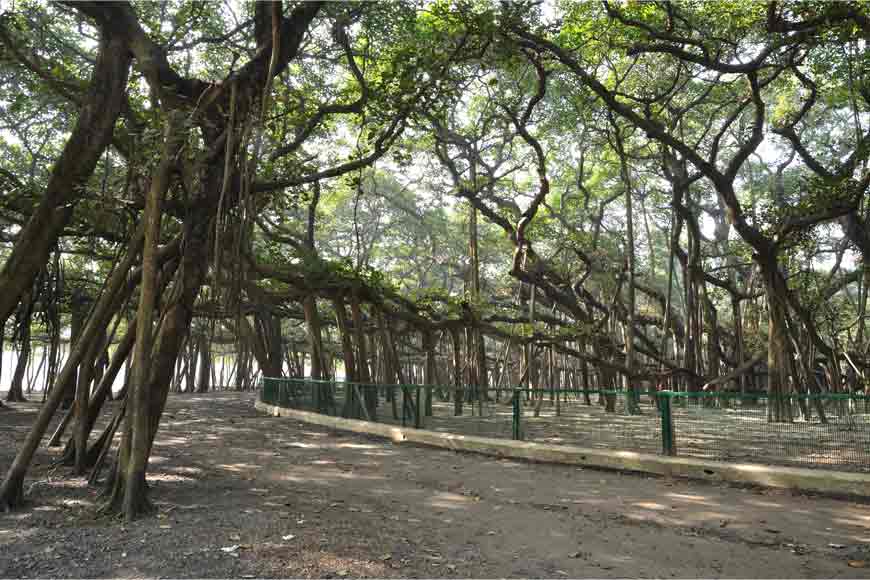The Acharya Jagadish Chandra Bose Indian Botanic Garden successfully transplant big trees—a way to protect the green cover – GetBengal story

Concerns have been raised by the recent spate of cyclones that have repeatedly struck the Bengal coast. This exposes us to the damaging ways we have been treating nature, leaving it vulnerable to its own forces. The aftermath of cyclones, which not only destroy houses and trees but also leave millions of people dead, homeless, or critically injured, includes roof collapses, tree falls, and flooding of entire regions.
It is particularly concerning for Bengal because the region experiences cyclones frequently and is losing lush foliage at an unsettlingly rapid rate. It is estimated that by 2050, Kolkata will be completely submerged due to the cyclones. Bengal's green cover is largely safe because of the sundarbans, but the world's largest mangrove forest faces uncertain futures.
There are numerous other environmental issues prevalent in our society, such as global warming, air pollution, the depletion of water resources, etc. We all know the problem, but solutions are slow to surface. Acharya Jagadish Chandra Bose Indian Botanic Garden, Asia’s largest botanical garden in Kolkata, may have found a solution to the toppling of trees during cyclones.
During Amphan, an extremely catastrophic tropical cyclone, more than 2,000 trees were uprooted in the Botanical Gardens, and only 1% of the foliage survived after the cyclone. During the recent cyclone Remal, around 100 trees were lost. This boosted the authority of the Botanical Gardens to find ways to restore the green cover instead of just chopping off the fallen trees. They started using equipment to re-plant the uprooted trees. They were able to recover a lot of trees through this process. This process is called tree transplantation. But what is this process exactly?
Environmentalist Somendra Mohan Ghosh was quoted saying, “Tree transplantation is a process of unearthing the trees and replanting them from their parent locations to new locations with the objective of re-growing the trees at new locations. So, when trees are unearthed during cyclones, these uprooted trees are usually replanted elsewhere with the objective of re-growing them.”
There are both advantages and disadvantages to this process. The advantage is that these transplanted trees can be regrown much faster compared to growing trees from saplings. Faster tree regrowth will hold the soil tight and prevent soil erosion while also providing other benefits like producing oxygen, fostering biodiversity, etc. The disadvantage is that the machines required to transplant trees are expensive. The equipment itself is costly, and in addition to this, there are the costs of aftercare and monitoring the transplanted trees.
“Tree transplantation is an effective process,” said Mr. Ghosh. “I myself transplanted 13 trees that were felled during Amphan around Rabindra Sarobar. However, it is costly. And personnel hired for this job must be well-trained to handle the equipment and carry out the process smoothly; otherwise, it is of no use. The key concern remains protecting the root ball while pruning the wider roots, which allows for the smooth regrowth of the transplanted trees. Also, the Indian Botanical Garden has not carried out this process outside. It has only been carried out within the perimeter of the garden.”
In addition to the garden, green space is necessary for Kolkata as a whole to flourish. Roadside tree removal results in permanent loss of the trees, even though the garden tries its best to re-establish trees nearby. Yet, it is not the responsibility of a single town to guarantee that trees are planted following each storm.
The frequency of cyclones hitting Bengal is the biggest concern. According to Mr. Ghosh, there is very little chance of reducing the impact of cyclones on Bengal. “The Bay of Bengal is relatively warmer than the Arabian Sea, and the average sea surface temperature is higher. So, the warm coast attracts more cyclones, and day by day, the frequency and intensity of cyclones increase. Very soon, the number of climate refugees will increase due to the devastating aftereffects of such dangerous cyclones.”
Transplantation of trees is therefore a job that the government needs to look into on a large scale. Planting saplings to cope with the loss of thousands of trees will take years and cannot fully match up to the oxygen generation needed for survival, thus disrupting the balance of oxygen and carbon dioxide in the atmosphere. This consequently leads to global warming because higher amounts of carbon dioxide trap the heat of sunlight. Every environmental problem is interconnected. They are not isolated from one another. Therefore, targeting specific areas of the environment is not feasible. A collective approach to nature will help restore the damage to humanity.
Can we, as citizens, reduce the impact of cyclones? The ideal solution would be to switch to solar power, use fewer vehicles, and try to plant more trees. However, not everyone can afford solar power, and public transportation vehicles also emit harmful gasses into the atmosphere. Transplantation of trees may be costly, but they just might be humanity’s best bet to recover green cover destroyed by cyclones.










